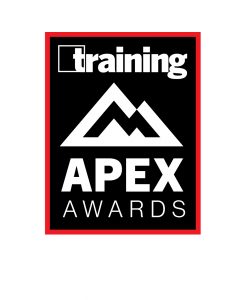
IT is a core function of Western Southern Financial Group. Leaders need to effectively and successfully execute on IT’s strategy to support the firm’s business objectives. Western Southern’s IT Leadership Development Program aimed to upskill identified associates to create a pipeline of leaders who could help achieve business objectives.
Program Details
The IT Leadership Development Program brought together managers and individual contributors with IT leaders as mentors. The associates trained included two groups of IT associates:
- Individual contributors who have the potential to lead and manage others
- Managers who have the potential to move into higher-level leadership roles
The two groups moved through the core curriculum in cohorts. Western Southern designed a curriculum containing a learning path tailored to each cohort group based on specific competencies (interpersonal savvy/customer focus, instills trust, communicates effectively, and develops talent). The senior IT leadership team identified these competencies based on a needs assessment, feedback from other IT leaders, and the business areas as core development opportunities for IT leaders.
Training was delivered using multiple methods, including online, instructor-led, virtual instructor-led, simulations, books, articles, Knowledge Cafes, leadership discussion panels, and a capstone project. The program lasted 10 months, and the organization’s learning mangement system, eTalent, was used to launch, track, and report on the training.
Learning activities included:
- A Multiplier Simulation designed to enable leaders to experience the Multiplier mindset, practice Multiplier principles, and learn to avoid Accidental Diminisher traps within the context of real-life business challenges. Through simulation, in-session experiments, and personal reflection, participants learned how to best multiply the talent of their team and cross-functional partners in order to drive long-term business value and to enable people to do the best work of their careers.
- A Coaching Conversation, a 40-minute online course with a practical, how-to focus. This learning experience offered a common language for the two-way coaching conversations that drive engagement, performance, and development. It aimed to help leaders create stronger relationships with their team, while enhancing their personal development and shifting accountability to the team.
- Virtual training sessions about turning strategy into results. Leaders learned actions they can take to engage themselves and their team in executing priorities and how to overcome the challenges that interfere with effective strategy realization.
- DiSC assessment and Developing Your Emotional Intelligence course, both online, followed by a virtual training session.
- Virtual training sessions about leading change. Participants discovered their Change IQ, learned about the phases of change many teams experience, and were introduced to best practices that enabled them to tackle and overcome the new business challenges of today and tomorrow.
- A Knowledge Café hosted by IT’s SVP/CIO with a discussion of the role of leaders to lead talent in executing the organization’s business objectives.
- Leadership Panels about customer focus and a leader’s role of putting the “Heart of our Customers at the Heart of our Business” and how their personal brand impacts their ability to influence and inspire confidence to get things done.
- Communicating Change in Challenging Times Case Study in which participants evaluated a case study examining how communication is a vital element to effectively manage change, especially during challenging times.
- Two two-hour virtual sessions on personal branding.
Participants completed reflection worksheets after each activity in preparation for a debrief with their manager and group mentor. Managers and mentors used Impact Maps to discuss action steps and track success with participants in relation to their personal development and program goals.
During the program, individual participants learned from their individual mentors and from each other through group mentoring. In addition, a capstone project ran throughout the program. The goal of the project was not only to apply skills learned in the program but also to tackle real-world IT challenges that program participants could solve. Two ideas were adopted to streamline and standardize IT processes. The projected savings from these ideas are targeted at approximately 9,000 hours for IT associates and 5,500 hours for IT managers.
Results
The program resulted in a 36 percent increase in IT capabilities (above the 30 percent goal) as measured by promotions and job creation among the participating group of 22 associates.




